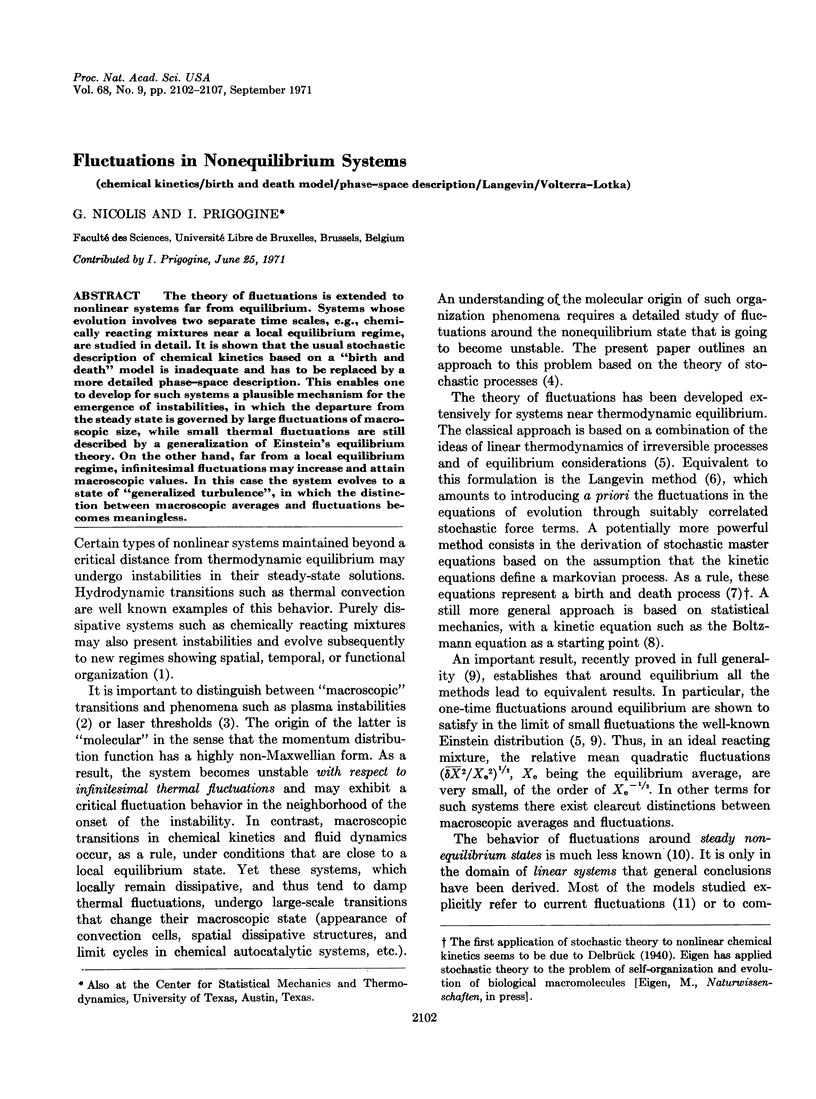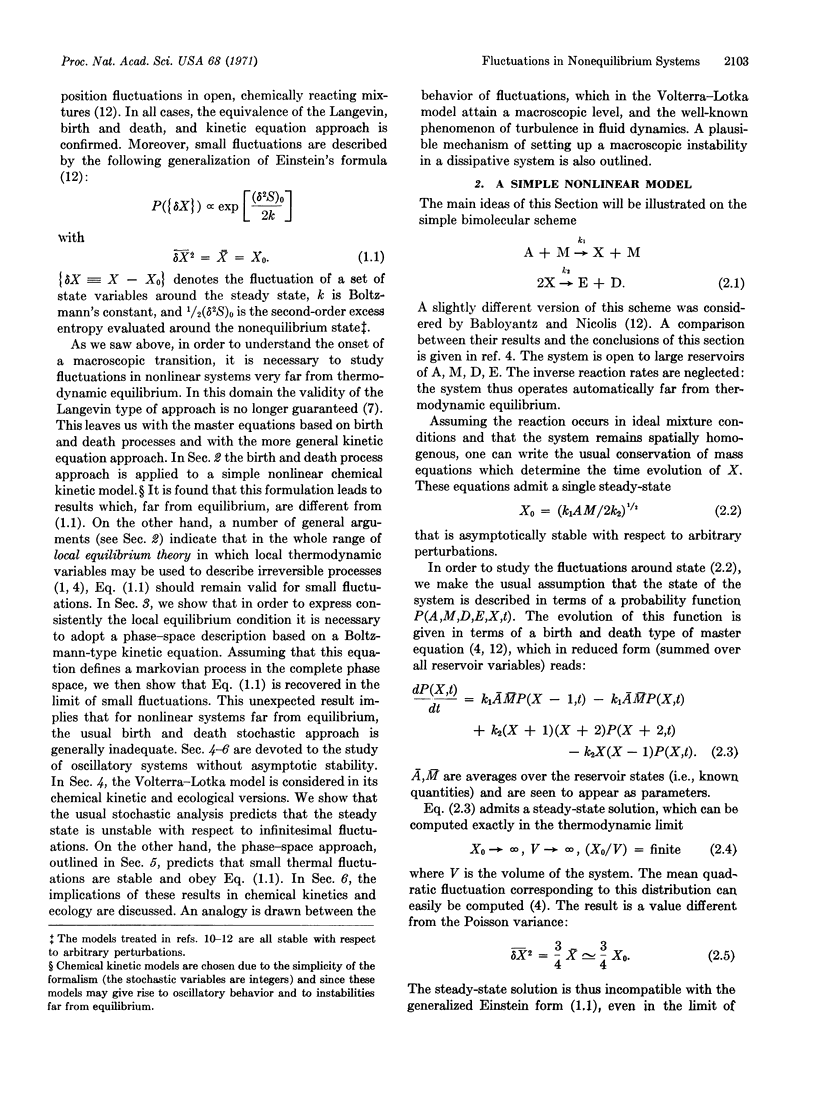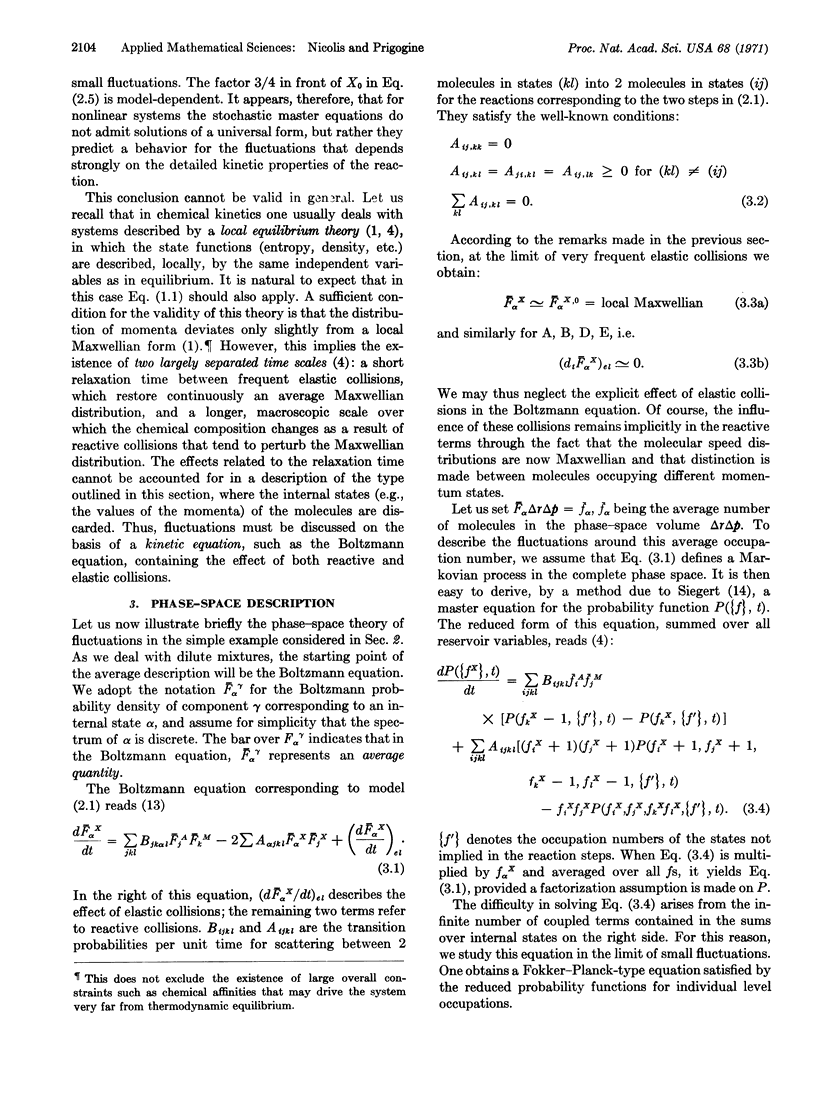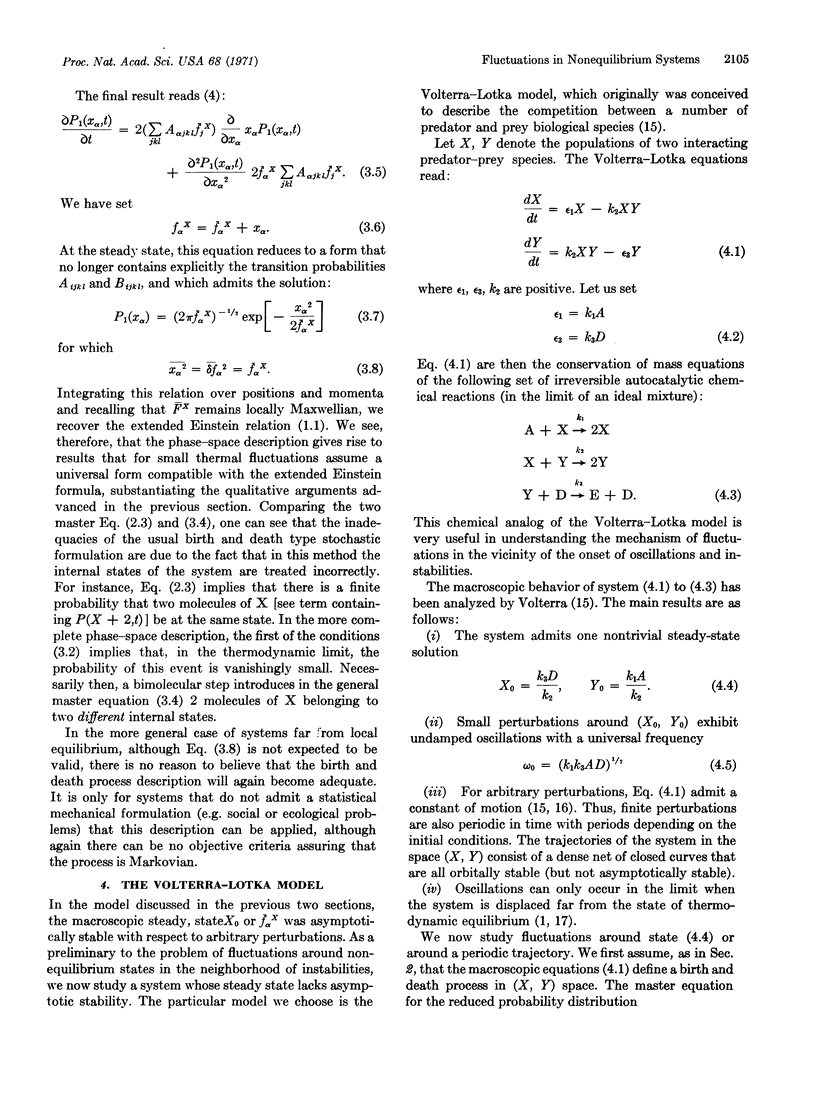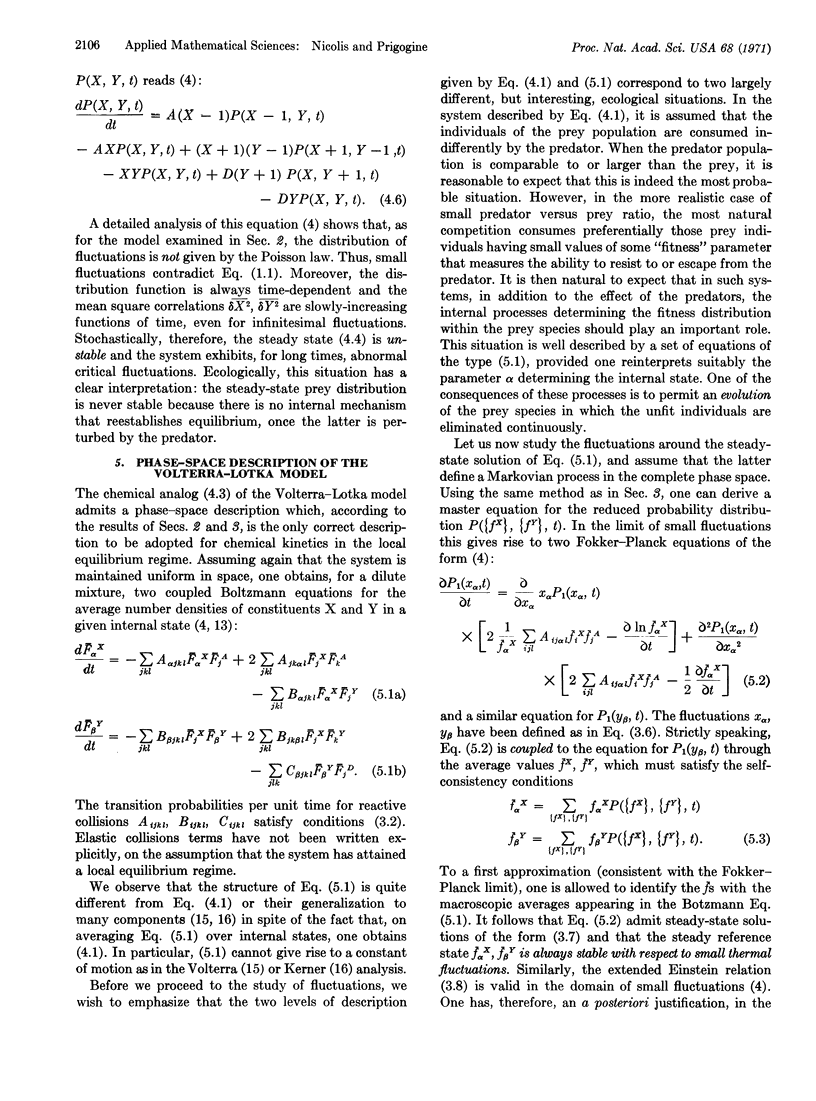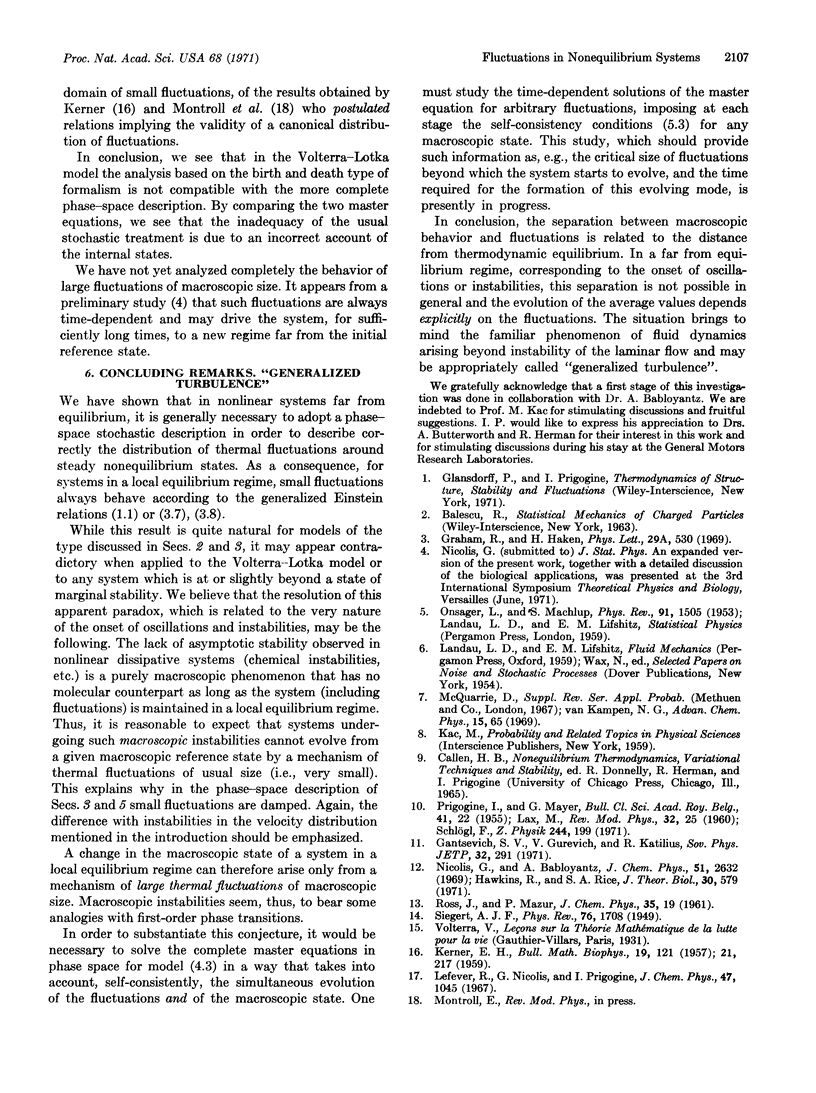Abstract
The theory of fluctuations is extended to nonlinear systems far from equilibrium. Systems whose evolution involves two separate time scales, e.g., chemically reacting mixtures near a local equilibrium regime, are studied in detail. It is shown that the usual stochastic description of chemical kinetics based on a “birth and death” model is inadequate and has to be replaced by a more detailed phase-space description. This enables one to develop for such systems a plausible mechanism for the emergence of instabilities, in which the departure from the steady state is governed by large fluctuations of macroscopic size, while small thermal fluctuations are still described by a generalization of Einstein's equilibrium theory. On the other hand, far from a local equilibrium regime, infinitesimal fluctuations may increase and attain macroscopic values. In this case the system evolves to a state of “generalized turbulence”, in which the distinction between macroscopic averages and fluctuations becomes meaningless.
Keywords: chemical kinetics, birth and death model, phase-space description, Langevin, Volterra-Lotka
Full text
PDF